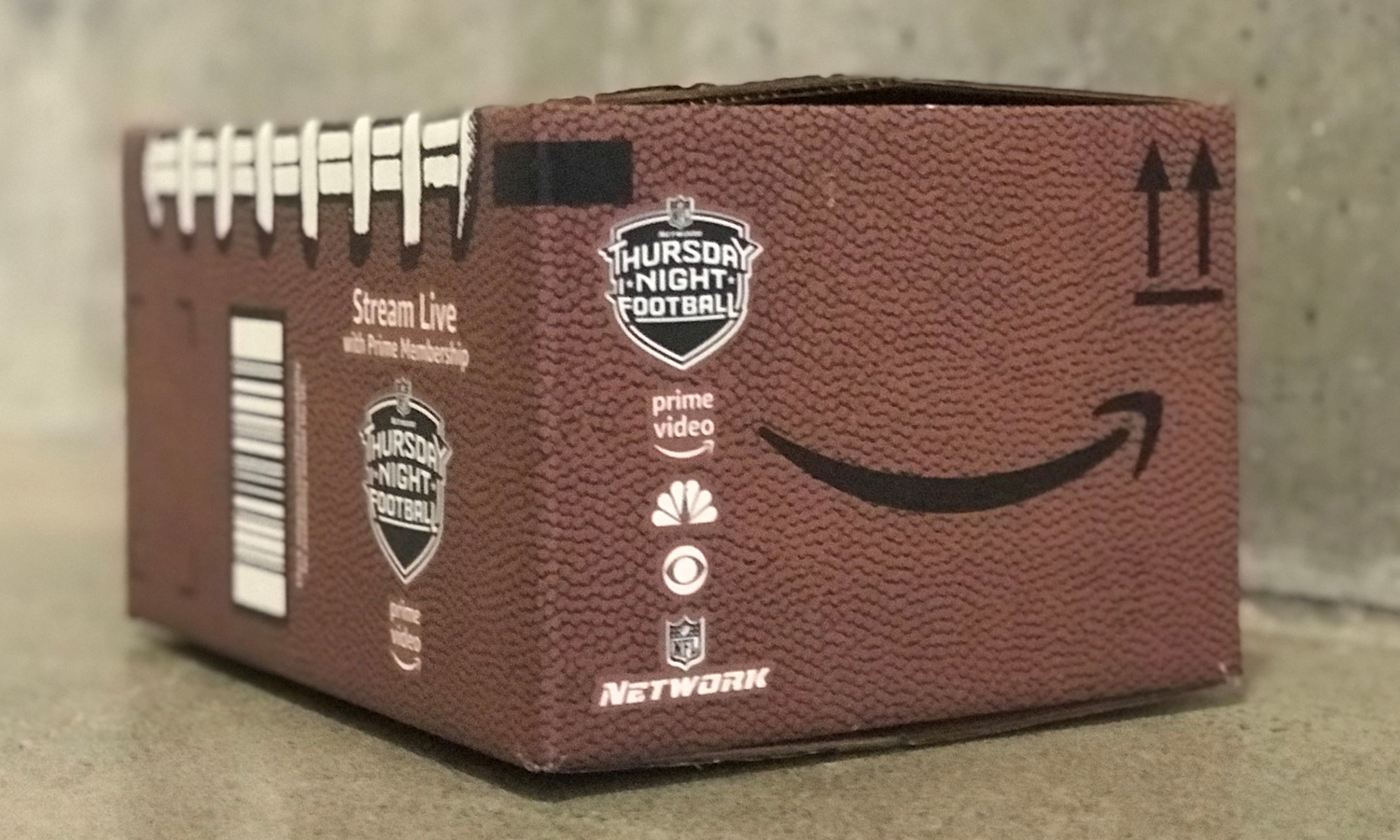Amazon Sports Execs Pleased With Thursday Night Football Quality, Numbers Through First Half of Season
Latency, reliability were paramount as Amazon and AWS Elemental built out end-to-end cloud-based workflow
Story Highlights
This week’s Seahawks-Cardinals matchup will mark the midway point in the season for Amazon’s Thursday Night Football streaming package, and the company is very positive on how the project has gone thus far. At a media event in San Francisco, Amazon Sports brass were upbeat on both viewership numbers and the overall streaming performance of their product.
Through its first four weeks of self-reported numbers, the streaming totals are up compared with the numbers of the similar streaming package that ran on Twitter last season. According to Amazon, TNF has reached 8.6 million viewers through the first five games of the package, and viewers are averaging a viewing time of approximately 51 minutes. Couple that with what Amazon says is a strong and reliable streaming experience, and there are lots of reasons to be optimistic for the sports “startup.”
“So far we’ve been very pleased with what we’ve done,” says Jim DeLorenzo, head of sports, Amazon Video. “The video-streaming quality is one of the things that we’ve gotten really positive customer feedback on. Look, we’re just getting started. It’s been a lot of fun being at the ground floor of this and seeing what makes sense for us. The way that we look at it is is to see what our customers want and to work backwards while seeing if there’s something in there that fits with how the sports world is working. Having this opportunity with the NFL has been really nice.”
The Amazon Sports team was well aware that, at Week 1, the spotlight would be white hot on the platform’s performance and that such issues as latency and reliability would make or break public opinion of the service. According to BA Winston, global head of digital video playback and delivery, Amazon Video, delivering live-streamed sports video in the form of the NFL (one of the biggest sports properties in the world]) to more than 180 countries has been no small task. Latency can be affected by everything — geography, ISPs, network — and dropout was not something that could be tolerated, but Amazon developed an architecture — in a relatively short amount time — to combat all of that and more.
“There were a few tenets and broad requirements that we laid out in the beginning that were carried through the whole project and its architecture,” says Winston. “With live, if the stream goes down, customers are not going to be happy, so reliability was a foundational thing that we talked about from the very beginning. We also had to talk about scale. Live is obviously very different from VOD when it comes to tune-in. How we handled scale was something that got a lot of attention. Then there was latency: with sports, it’s very different from even a live linear channel. How can we get the stream to a customer’s device as close as possible to what they would otherwise watch on a cable network?”
Winston’s engineering team has lived up to the task, in his eyes, working with the team at AWS Elemental to create a fully end-to-end cloud-based delivery workflow.
“I’m quite excited to see this transition in the industry where we can now do a sport like this at scale, with good quality, by doing everything in the cloud,” says Winston. “That’s a significant transition that we are going to see when comparing to where we may be a few years from now.”
He also credits Amazon’s 2015 efforts to begin streaming live linear channels in the U.S. and Europe as laying critical groundwork for what would be needed once the NFL deal was struck earlier this year.
Beyond Thursday Night Football, Amazon Sports has begun forging a path into other arenas, including exclusive rights: last week, it announced plans to live-stream tennis with the inaugural Next Gen ATP Finals set to take place in Italy this week. As for other plans the company might pursue, especially when it comes to exclusive deals, DeLorenzo is straightforward, saying it’s “too early to say.”

